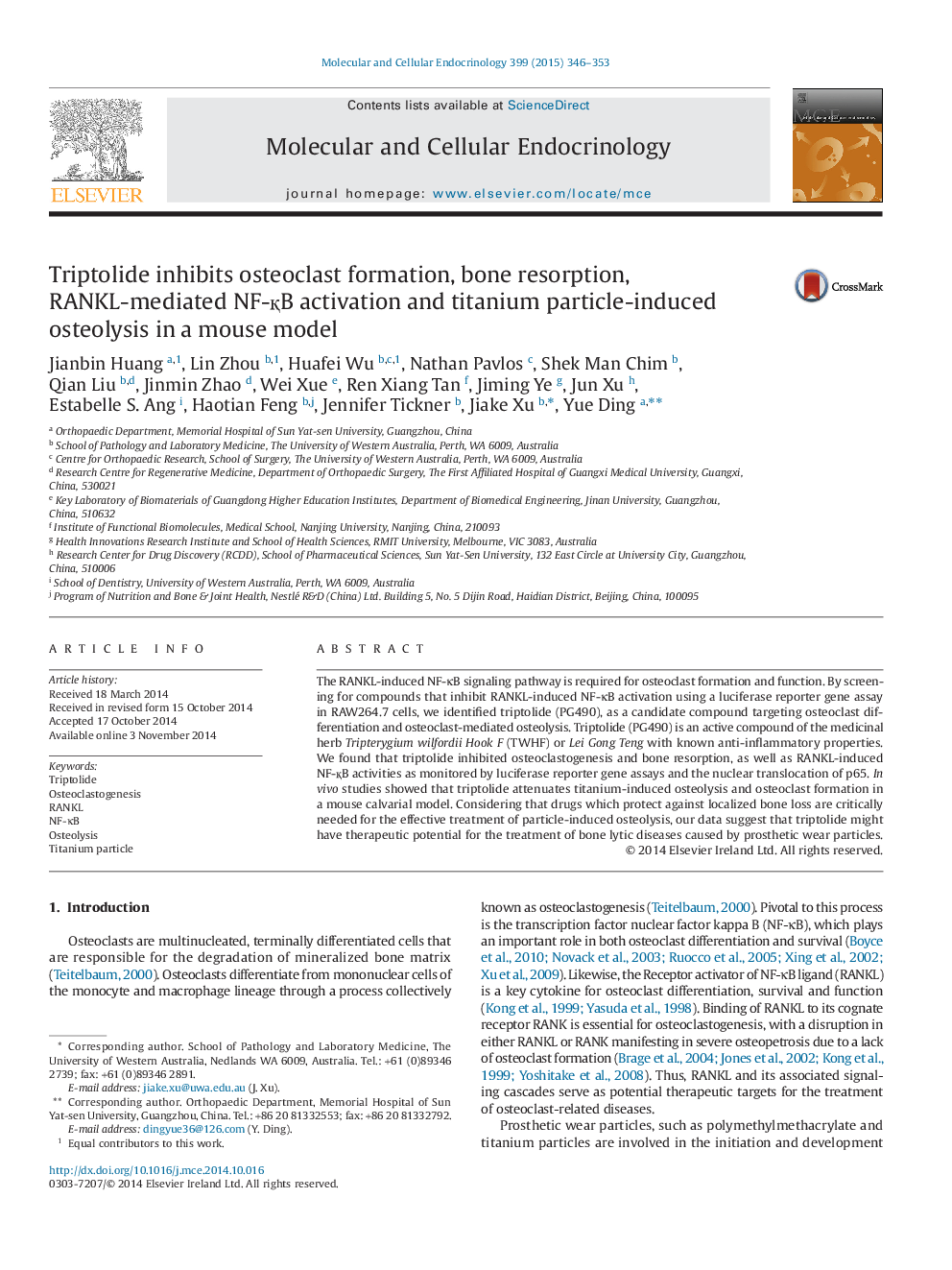| Article ID | Journal | Published Year | Pages | File Type |
|---|---|---|---|---|
| 2195976 | Molecular and Cellular Endocrinology | 2015 | 8 Pages |
•Triptolide inhibited osteoclastogenesis and bone resorption, and RANKL-induced NF-kB activities.•Triptolide attenuates titanium-induced osteolysis and osteoclast formation in a mouse calvarial model.•Triptolide might have therapeutic potential for the treatment of bone lytic diseases caused by prosthetic wear particles.
The RANKL-induced NF-κB signaling pathway is required for osteoclast formation and function. By screening for compounds that inhibit RANKL-induced NF-κB activation using a luciferase reporter gene assay in RAW264.7 cells, we identified triptolide (PG490), as a candidate compound targeting osteoclast differentiation and osteoclast-mediated osteolysis. Triptolide (PG490) is an active compound of the medicinal herb Tripterygium wilfordii Hook F (TWHF) or Lei Gong Teng with known anti-inflammatory properties. We found that triptolide inhibited osteoclastogenesis and bone resorption, as well as RANKL-induced NF-қB activities as monitored by luciferase reporter gene assays and the nuclear translocation of p65. In vivo studies showed that triptolide attenuates titanium-induced osteolysis and osteoclast formation in a mouse calvarial model. Considering that drugs which protect against localized bone loss are critically needed for the effective treatment of particle-induced osteolysis, our data suggest that triptolide might have therapeutic potential for the treatment of bone lytic diseases caused by prosthetic wear particles.
